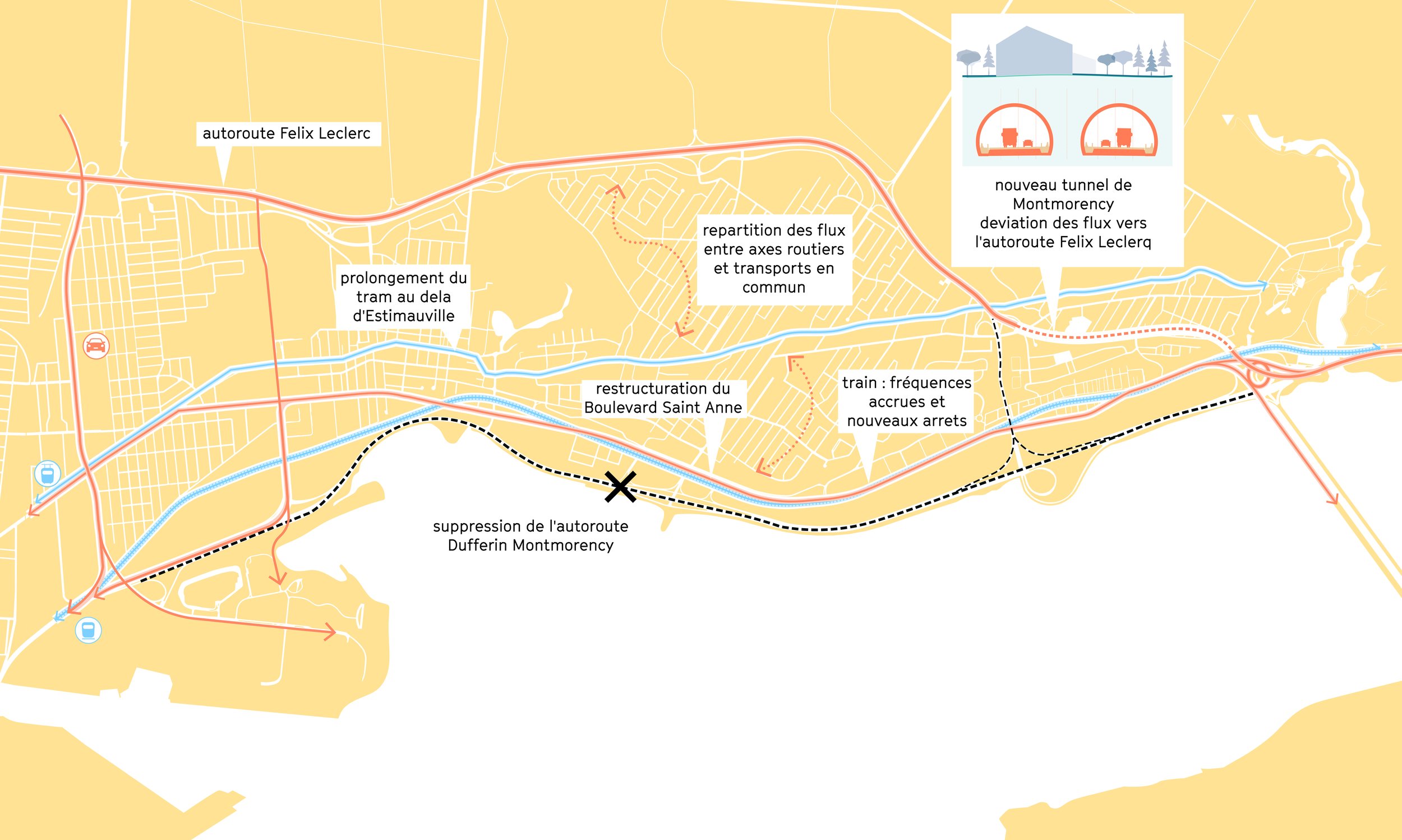
POST HIGHWAY CITY, Littoral Est
TYPE: Urban planning and landscape
YEAR: 2024
LOCATION: Quebec City, Canada
SIZE: 8 km riverfront
TEAM: MAMA, Socotec
CLIENT: La Commission de la capitale nationale du Québec
The POST HIGHWAY CITY is a practical guide offering concrete solutions to cities that have suffered since the 1960s from planning policies favoring automobiles over urban and pedestrian scale. The guide specifically applies to the eastern waterfront of Quebec City, proposing to make it a pioneering city in sustainable urban development. It promises the restoration of a landscape that has been obscured and impoverished over the years by a mode of urban development characterized by the predominance of automobiles and industries. Spanning a distance of 8 km, the project aims to regenerate the ecological landscape of the riverbanks while allowing access to Quebecers, and to create a new high-quality waterfront, both as an entrance to Quebec City and as a major and dynamic public space, fostering a new common identity for the eastern waterfront neighborhoods.
POST HIGHWAY City was presented in the Littoral Est international ideas competition, and awarded an Honorable mention.
At the heart of the project is the removal of the Dufferin-Montmorency highway, a major physical and visual barrier that fragments the territory and impedes access to the riverbanks. Once a barrier, the highway footprint will become a true ecological corridor, allowing for the regeneration of river ecosystems, promoting biodiversity, and strengthening resilience to climate change. Existing natural areas, such as marshes and ponds, will be preserved and transformed into vast natural parks.
The land freed up by the highway will be transformed into public spaces where residents can enjoy a variety of recreational activities such as cycling, walking, cross-country skiing, and waterfront access. Additionally, artistic interventions will transform the highway remnants into aesthetic and playful elements, contributing to the valorization of local heritage and making the new park a tourist attraction, advocating for ecology and sustainable urban development.
The removal of the highway will be enabled by a complete reorganization of the mobility scheme. This includes redirecting traffic flows to other road axes, creating a tunnel, and introducing new public transportation modes, such as a tramway and urban train, to provide efficient alternatives to individual cars. Road infrastructures will be redesigned to promote soft mobility and connect neighborhoods, thus contributing to creating a more friendly and sustainable urban environment.
The increase in real estate value in the area will be regulated by a strict urban plan, prioritizing the construction of social housing. The plan will include waterfront development, providing a new facade for this transforming neighborhood.
The POST HIGHWAY CITY project is part of a broader vision of sustainable urban development, aiming to highlight the site's history while fostering the creation of a high-quality urban environment that meets citizens' expectations. By integrating principles of ecological regeneration, soft mobility, and heritage valorization, this project offers an innovative model of urban redevelopment that could serve as a reference for other cities facing similar challenges, thus establishing Quebec City as a leading example.











